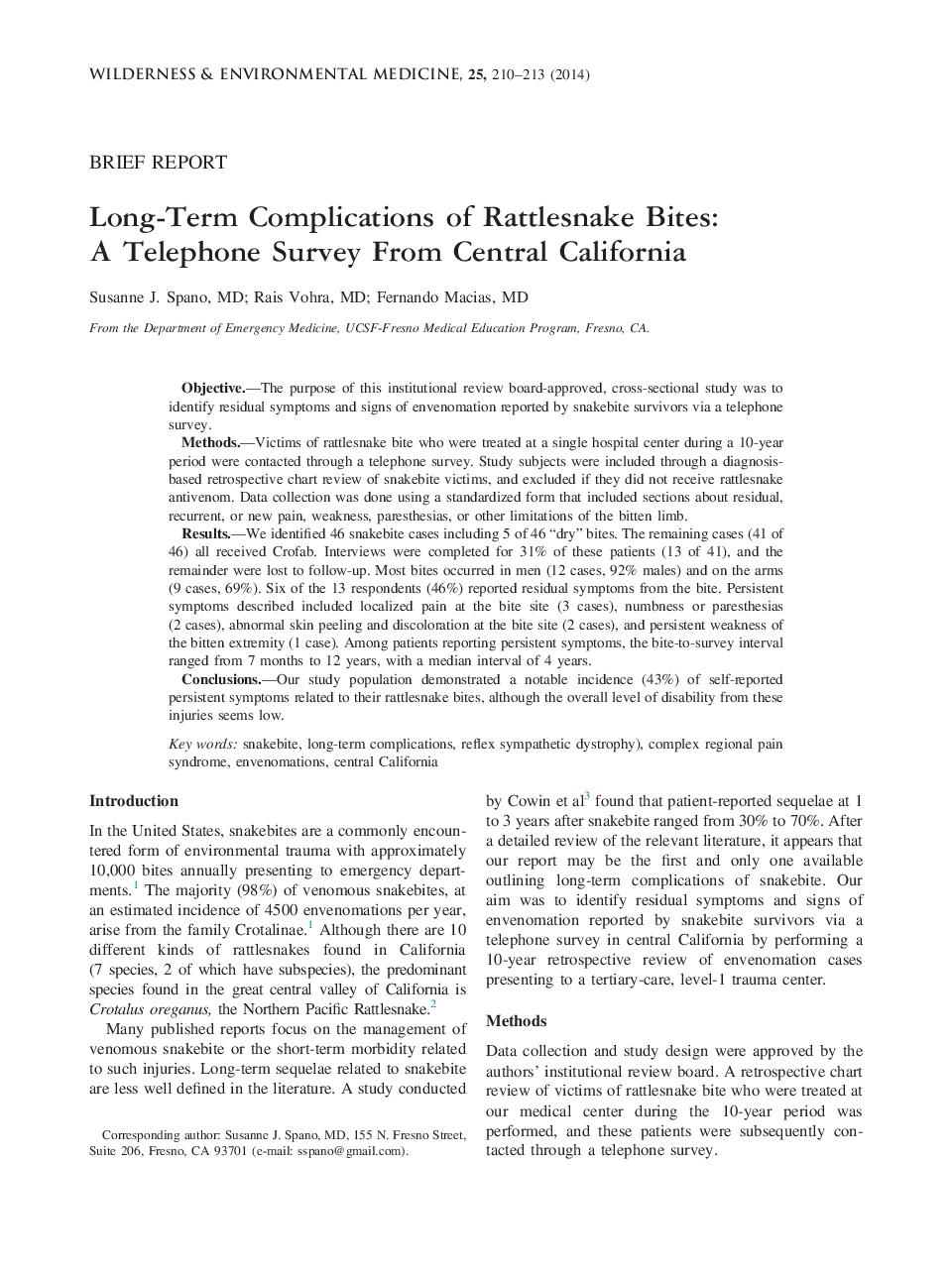| Article ID | Journal | Published Year | Pages | File Type |
|---|---|---|---|---|
| 2614115 | Wilderness & Environmental Medicine | 2014 | 4 Pages |
ObjectiveThe purpose of this institutional review board-approved, cross-sectional study was to identify residual symptoms and signs of envenomation reported by snakebite survivors via a telephone survey.MethodsVictims of rattlesnake bite who were treated at a single hospital center during a 10-year period were contacted through a telephone survey. Study subjects were included through a diagnosis-based retrospective chart review of snakebite victims, and excluded if they did not receive rattlesnake antivenom. Data collection was done using a standardized form that included sections about residual, recurrent, or new pain, weakness, paresthesias, or other limitations of the bitten limb.ResultsWe identified 46 snakebite cases including 5 of 46 “dry” bites. The remaining cases (41 of 46) all received Crofab. Interviews were completed for 31% of these patients (13 of 41), and the remainder were lost to follow-up. Most bites occurred in men (12 cases, 92% males) and on the arms (9 cases, 69%). Six of the 13 respondents (46%) reported residual symptoms from the bite. Persistent symptoms described included localized pain at the bite site (3 cases), numbness or paresthesias (2 cases), abnormal skin peeling and discoloration at the bite site (2 cases), and persistent weakness of the bitten extremity (1 case). Among patients reporting persistent symptoms, the bite-to-survey interval ranged from 7 months to 12 years, with a median interval of 4 years.ConclusionsOur study population demonstrated a notable incidence (43%) of self-reported persistent symptoms related to their rattlesnake bites, although the overall level of disability from these injuries seems low.
